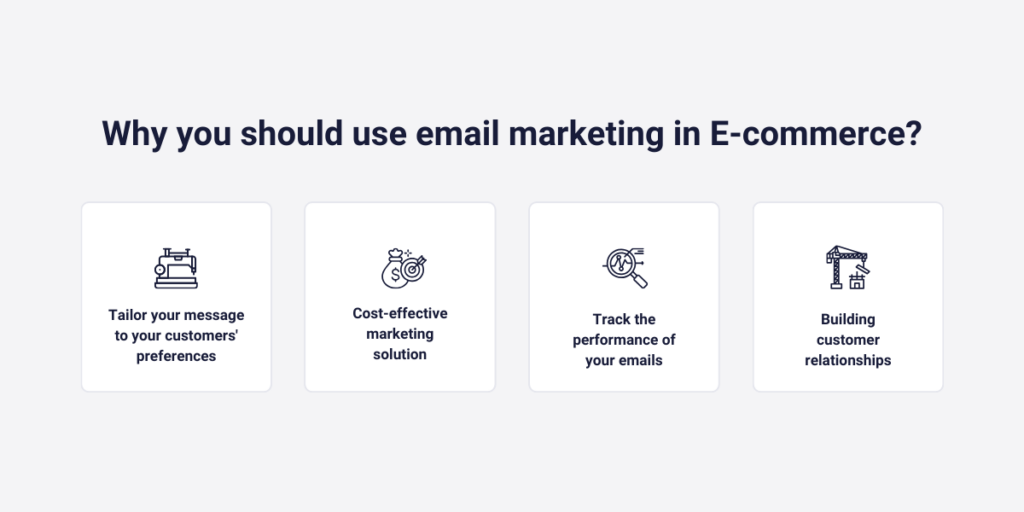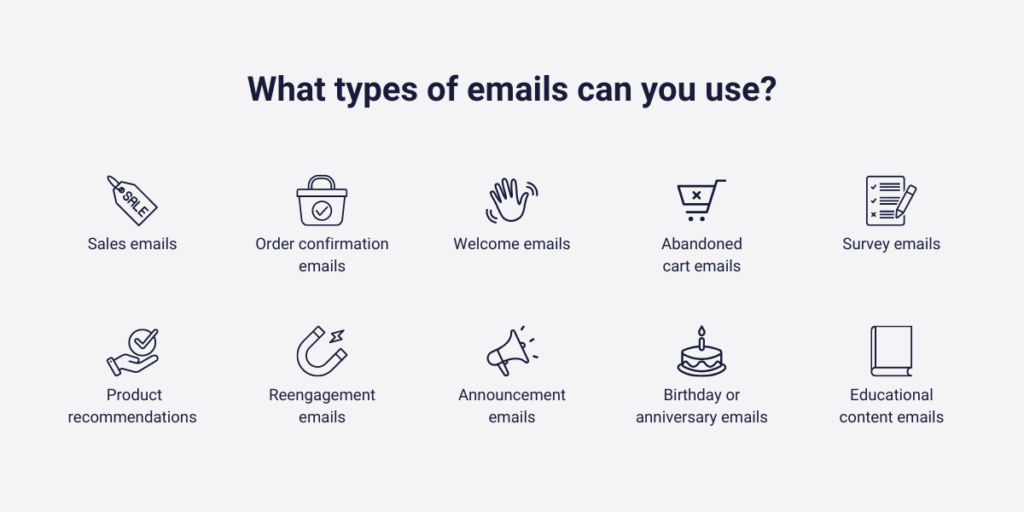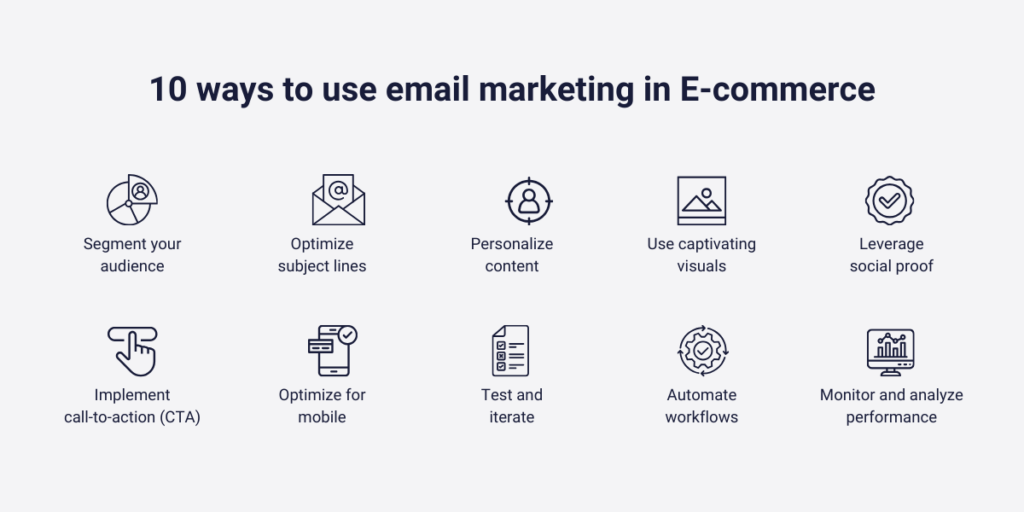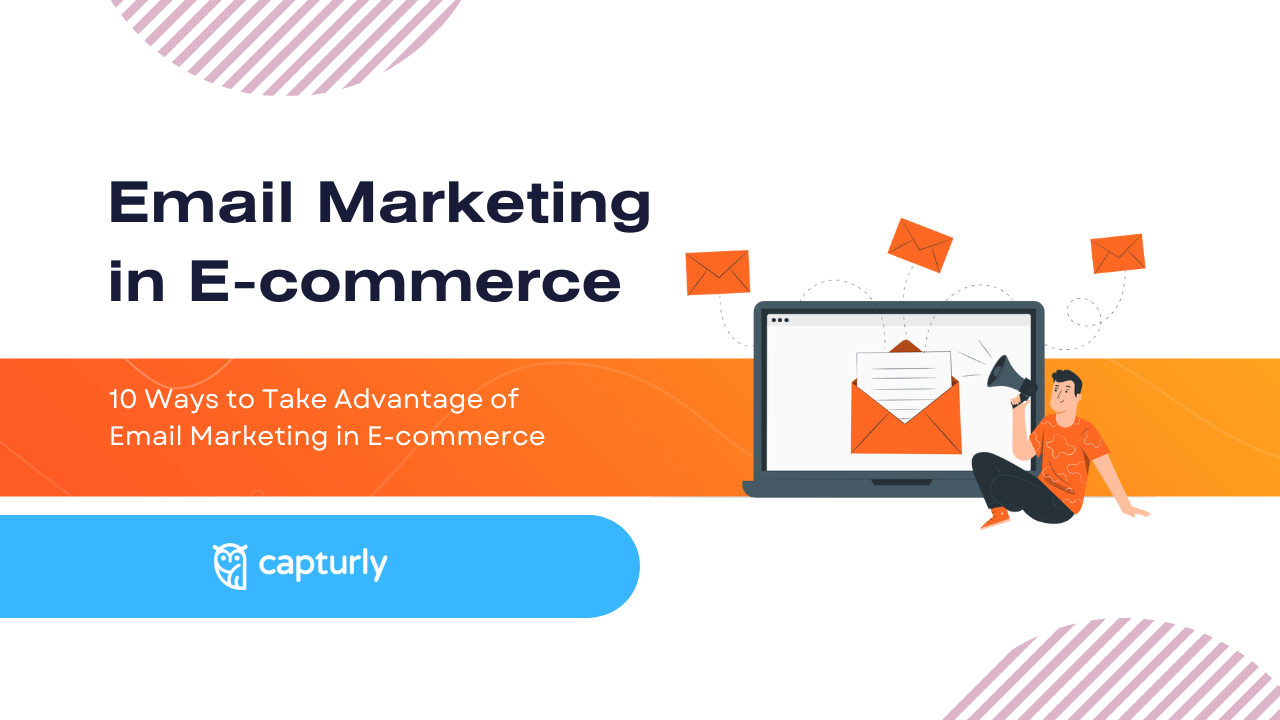In today’s fast-paced digital landscape, where online shopping has become the norm, email marketing stands out as a beacon of opportunity for e-commerce businesses. It’s not just another marketing tactic; it’s a powerful tool that can make or break the success of your online store. As we navigate through the vast sea of digital communication channels, email marketing remains a steadfast and reliable vessel, guiding businesses toward their goals of connecting with customers, boosting sales, and fostering long-term relationships.
So, why exactly is email marketing so crucial in the world of online shopping? Join us as we unravel the layers of this digital powerhouse and discover how it can revolutionize the way you engage with your audience, drive sales, and build lasting connections.
Get ready to embark on a journey of discovery and empowerment as we unveil the secrets to leveraging email marketing for e-commerce success.
Table of Contents
Why is email marketing important in the E-commerce industry?
Email marketing in e-commerce is like the backbone of online shopping because it lets stores talk directly to their customers. It’s essential because it can send messages that feel personal, get people interested, and make them buy stuff.
1. Tailor your message to your customers’ preferences
First off, email marketing is great because it can be super personal. Stores can use info about their customers, like what they bought before, to send emails that feel just right. For example, a clothes store might send an email suggesting new outfits based on what someone’s bought or looked at before. This makes shopping more fun and can lead to more sales.
2. Cost-effective marketing solution
Email marketing in e-commerce is also awesome because it’s not expensive. Unlike ads on TV or in magazines, sending emails doesn’t cost much at all. This means even small stores can do it, not just big companies with lots of money.
3. Track the performance of your emails
Plus, email marketing gives stores a way to see how well their emails are doing. They can look at things like how many people opened the email or clicked on a link inside. This helps stores figure out what works best and make their emails even better. For example, an electronics store might see which kinds of products people like the most by looking at what they click on in emails.
4. Building customer relationships
And on top of all that, email marketing helps stores make friends with their customers. By sending emails with cool stuff, like tips or special offers, stores can make people like them more. For instance, a food delivery service might send out recipes or discounts to its customers, making them feel happy and more likely to stick around.

Overall, email marketing is a big deal for online stores. It brings in customers, sells stuff, and makes them want to come back for more. It’s a must-have tool for any store that wants to do well in today’s competitive online world.
What types of emails can you use?
When you’re doing email marketing for your online store, there are different types of emails you can use to connect with your customers:
1. Sales emails
These emails are all about letting your customers know about special deals, discounts, or sales happening on your website. For example, a clothing store might send an email announcing a big sale with 30% off all new clothes.
2. Order confirmation emails
These emails are sent right after someone buys something from your store. They confirm the order and let the customer know when to expect their stuff. For instance, if you buy a book online, you’ll get an email confirming your order and telling you when it’ll arrive.
3. Welcome emails
These emails are sent to new customers to say hello and introduce them to your store. They might include a special discount on their first purchase to make them feel welcome. For example, a skincare brand might send a welcome email to new customers with a coupon for 10% off their first order.
4. Abandoned cart emails
Ever put something in your online shopping cart but didn’t buy it? These emails remind you about what you left behind and encourage you to complete your purchase. For instance, if you leave a camera in your cart without buying it, you might get an email reminding you about it and offering a discount to buy it now.
5. Product recommendations
These emails suggest other products you might like based on what you’ve looked at or bought before. For example, if you buy a camera online, you might get an email suggesting camera accessories or photography books that go well with it.
6. Survey emails
These emails ask customers what they think about your products or services. They might include a survey or a poll to get feedback that can help you improve. For example, a fitness app might ask users to rate how much they like the app and give suggestions for how it could be better.
7. Reengagement emails
These emails are for customers who haven’t bought anything in a while. They might include a special offer or discount to get them interested in buying again. For example, if you haven’t bought clothes from a store in a few months, you might get an email with a coupon for your next purchase.
8. Announcement emails
These emails are for letting customers know about important news or updates from your store, like new products or upcoming events. For example, a software company might send an email announcing a new feature or software update.
9. Birthday or anniversary emails
These emails celebrate special occasions like a customer’s birthday or the anniversary of their first purchase. They might include a personalized message or a special discount to make the customer feel special. For example, a beauty store might send an email with a coupon for a gift or a discount on their birthday.
10. Educational content emails
These emails share helpful tips, tutorials, or information with customers to teach them something new. They can help build trust and loyalty with your brand. For example, a gardening store might send out emails with tips for growing plants or ideas for DIY garden projects.

With these different types of emails, you can create a strong connection with your customers and keep them engaged with your store. Each type of email serves a different purpose, whether it’s promoting sales, confirming orders, or sharing helpful information. By using a variety of emails in your marketing strategy, you can build trust, loyalty, and excitement among your customers, ultimately driving more sales and growing your business.
So don’t be afraid to get creative and experiment with different types of emails to see what works best for your audience. With the right approach, email marketing can be a powerful tool to help you succeed in the competitive world of e-commerce.
10 ways to use email marketing in E-commerce
In this comprehensive guide, we’ll delve into 10 powerful strategies to leverage email marketing effectively in your e-commerce endeavors. From personalized promotions to automated workflows, each tactic is designed to help you optimize your email campaigns and drive tangible results for your business.
Whether you’re a seasoned marketer or just starting your e-commerce journey, these actionable insights will empower you to harness the full potential of email marketing and propel your business to new heights.
Let’s dive in and discover how you can unlock the power of email marketing to fuel the growth of your e-commerce business.
1. Segment your audience
Segmenting your email list means dividing it into smaller groups based on different factors like age, location, or purchase history. By doing this, you can send emails that are tailored specifically to each group’s interests and preferences.
For example, if you’re running a fashion store, you could segment your list into categories like men’s clothing, women’s clothing, or accessories. This way, you can send targeted promotions and recommendations that are more likely to resonate with each group.
2. Optimize subject lines
Your email subject line is the first thing people see when they receive your email, so it’s crucial to make it attention-grabbing and compelling. Experiment with different subject lines to see what works best for your audience. Try to keep them short, sweet, and to the point, while also sparking curiosity or offering value.
For instance, you could try using emojis, asking a question, or creating a sense of urgency by mentioning limited-time offers or discounts.
3. Personalize content
Personalization is key to creating meaningful connections with your audience. Use data about your customers, such as their purchase history or browsing behavior, to tailor your email content to their interests and preferences.
For example, you could recommend products similar to ones they’ve bought before, or send personalized birthday discounts. The more personalized your emails are, the more likely they are to resonate with your audience and drive engagement.
4. Use captivating visuals
Visuals can make a huge difference in the effectiveness of your emails. Incorporate eye-catching images, videos, and graphics to grab your audience’s attention and make your emails more engaging.
For example, if you’re promoting a new product, include high-quality images or videos showcasing its features and benefits. Visuals not only make your emails more appealing but also help convey your message more effectively.
5. Leverage social proof
Social proof is a powerful psychological phenomenon that can influence people’s purchasing decisions. Showcase customer testimonials, reviews, or user-generated content in your emails to build trust and credibility with your audience.
For example, you could include quotes from satisfied customers, star ratings for your products, or pictures of people using your products. Social proof helps reassure your audience that they’re making the right choice by purchasing from you.
6. Implement call-to-action (CTA)
A clear and compelling call-to-action (CTA) prompts your audience to take the next step, whether it’s making a purchase, signing up for a newsletter, or following you on social media. Make sure your CTA stands out and is easy to understand. Use action-oriented language and consider using buttons or links to make it more clickable.
For example, you could use phrases like “Shop Now,” “Learn More,” or “Get Started Today” to encourage action.
7. Optimize for mobile
With more people accessing their emails on mobile devices than ever before, it’s essential to ensure your emails are mobile-friendly. Optimize your email design and layout for smaller screens, with easy-to-read fonts, clear formatting, and mobile-responsive elements.
Test your emails across different devices and email clients to ensure they look good and function properly on all platforms. A seamless mobile experience is crucial for engaging with your audience and driving conversions.
8. Test and iterate
Testing is a crucial part of optimizing your email marketing strategy. Experiment with different elements of your emails, such as subject lines, content, visuals, and CTAs, to see what resonates best with your audience.
Use A/B testing to compare different versions of your emails and identify which ones perform better. Analyze the results and iterate on your findings to continuously improve your email campaigns over time.
9. Automate workflows
Automating your email workflows allows you to deliver timely and relevant messages to your audience at every stage of their journey. Set up automated email sequences, such as welcome emails, abandoned cart reminders, or post-purchase follow-ups, to nurture leads and drive conversions. Use triggers based on specific actions or behaviors, such as website visits or email opens, to send targeted messages that meet your audience’s needs and interests. Automation saves time and effort while ensuring a consistent and personalized experience for your customers.
10. Monitor and analyze performance
Tracking key metrics and analyzing performance data is essential for measuring the effectiveness of your email marketing efforts. Monitor metrics such as open rates, click-through rates, conversion rates, and revenue generated from email campaigns to gauge their success. Use analytics tools to gain insights into your audience’s behavior and preferences, and identify areas for improvement. Use this data to optimize your email strategy, refine your targeting and messaging, and drive better results for your business.

What can you expect once you begin to use email marketing?
By implementing these 10 strategies, you’ll be well-equipped to harness the full potential of email marketing and drive success for your e-commerce business. Experiment with different tactics, stay up-to-date with industry trends and continuously iterate and optimize your email campaigns to keep your audience engaged and your business thriving. Email marketing in e-commerce is a powerful tool that, when used effectively, can help you build stronger relationships with your customers, drive sales, and achieve your business goals.
The best email survey tool
Capturly’s Survey feature provides e-commerce businesses with valuable insights into customer preferences, opinions, and behaviors, allowing you to gather actionable feedback to enhance your email marketing strategy. By leveraging Capturly’s Survey feature, you can create customizable surveys that capture relevant data from your target audience, such as product preferences, shopping habits, and satisfaction levels. This valuable information can then be used to tailor your email campaigns, personalize content, and improve overall customer experience, driving better results and higher ROI.
Conclusion
In conclusion, email marketing in e-commerce serves as a powerful tool for e-commerce businesses to drive sales, foster customer relationships, and achieve long-term success. By implementing these 10 strategies, you’ll be well-equipped to harness the full potential of email marketing and drive success for your e-commerce business.
Experiment with different tactics, stay up-to-date with industry trends and continuously iterate and optimize your email campaigns to keep your audience engaged and your business thriving. Email marketing in e-commerce is a powerful tool that, when used effectively, can help you build stronger relationships with your customers, drive sales, and achieve your business goals.
Don't forget, sharing is caring! :)

